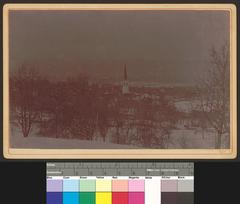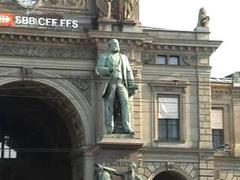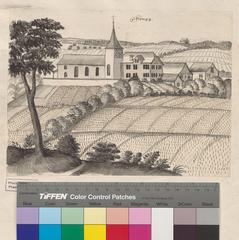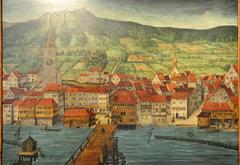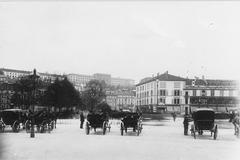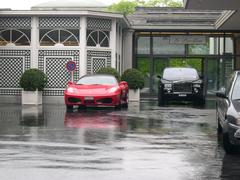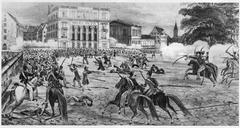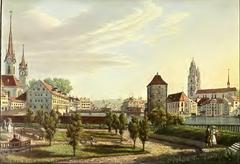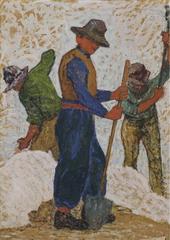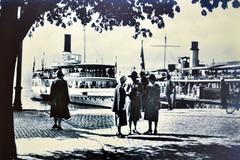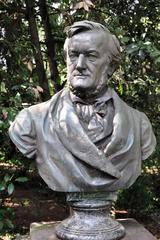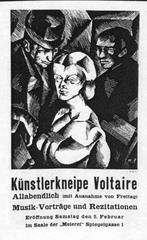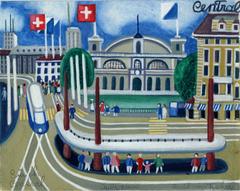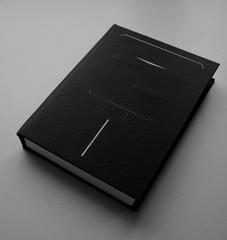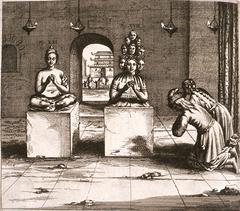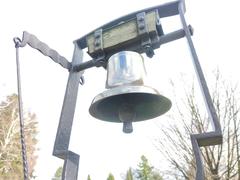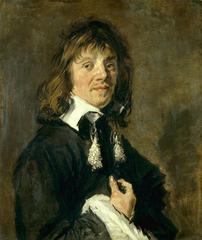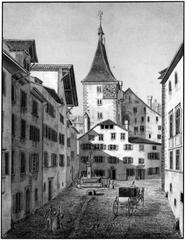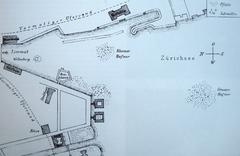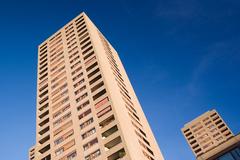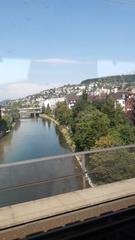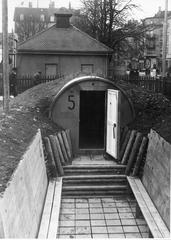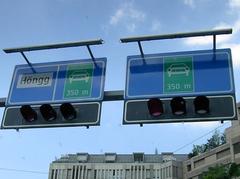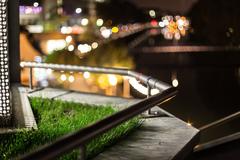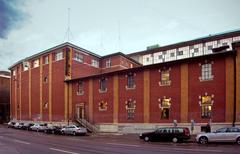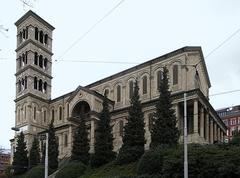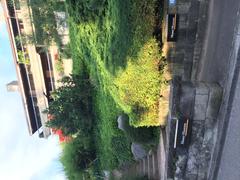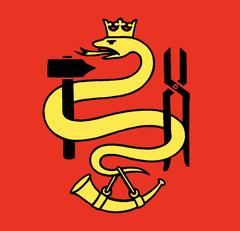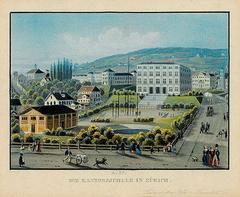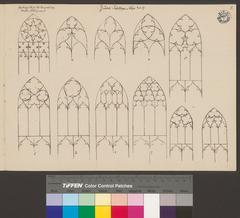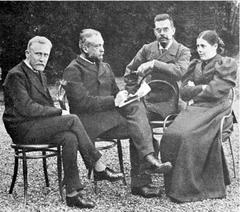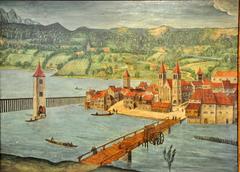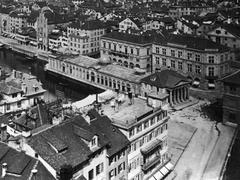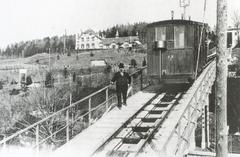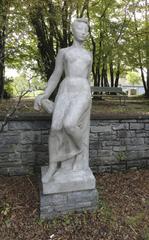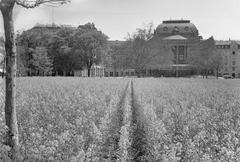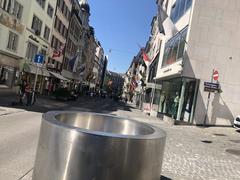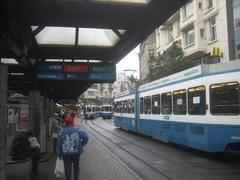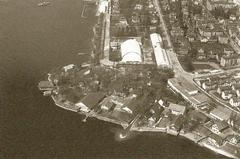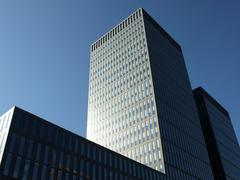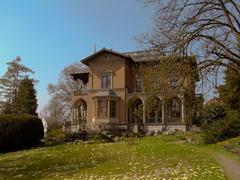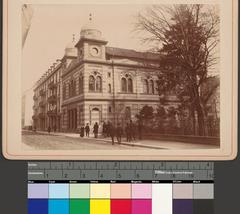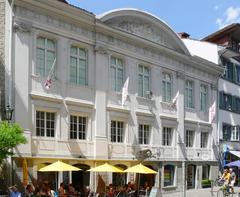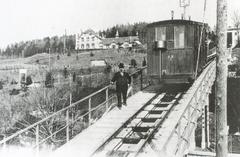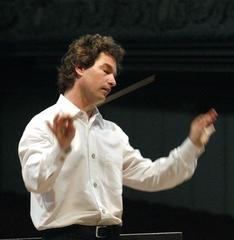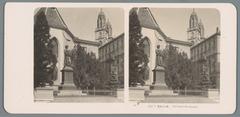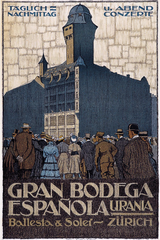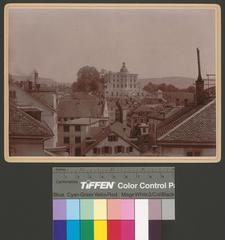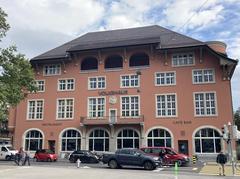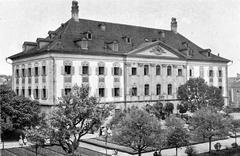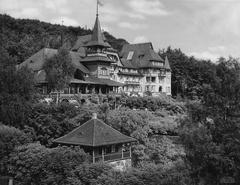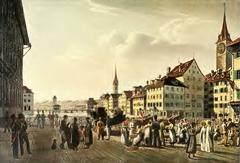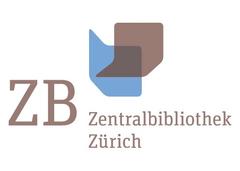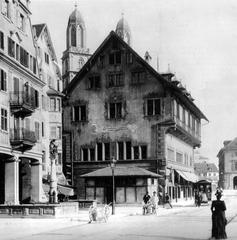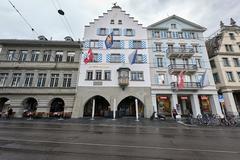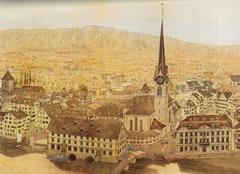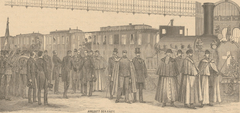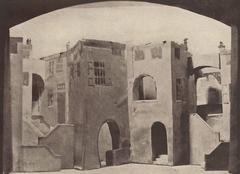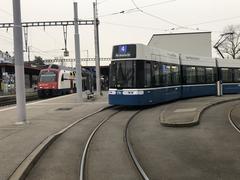
Cemetery Sihlfeld: Visiting Hours, Tickets, and Historical Significance in Zürich
Date: 04/07/2025
Introduction
Sihlfeld Cemetery (Friedhof Sihlfeld) is Zürich’s largest burial ground and a remarkable testament to the city’s evolving social, cultural, and architectural landscape. Established in the late 19th century as a non-denominational cemetery, Sihlfeld combines historical gravitas with beautifully landscaped green spaces, welcoming visitors seeking history, art, and tranquility. This guide covers essential information about visiting hours, tickets, accessibility, travel tips, and highlights, ensuring a respectful and enriching experience at one of Zürich’s most significant historical sites (de.wikipedia.org; swissinfo.ch; stadt-zuerich.ch).
Table of Contents
- History and Foundation
- Expansion and Architectural Development
- Crematoriums and Funerary Innovation
- Notable Memorials and Graves
- Urban Integration and Social Role
- Artistic and Architectural Heritage
- Visitor Information
- Visitor Etiquette
- Frequently Asked Questions (FAQ)
- Conclusion and Resources
History and Foundation
Sihlfeld Cemetery was established in 1877 in response to Zürich’s rapid urban growth and reforms transferring burial responsibilities from religious to municipal authorities. City architect Arnold Geiser designed the cemetery’s original section (Sihlfeld A), featuring a classically inspired, symmetrical layout with a central avenue lined by thujas. This design, influenced by Vienna’s Central Cemetery, reflected contemporary ideals of order and dignity in public spaces (de.wikipedia.org).
Expansion and Architectural Development
Several expansion phases followed, with new sections (B, C, D, E) added as Zürich’s population swelled and the city’s boundaries expanded. In 1889, Sihlfeld became home to Switzerland’s first crematorium—a significant innovation at the time. The cemetery’s name changed from “Centralfriedhof” to “Friedhof Sihlfeld” in 1896, following the city’s territorial growth and establishment of additional burial grounds (de.wikipedia.org).
Crematoriums and Funerary Innovation
Sihlfeld’s two historic crematoriums are milestones in Swiss funerary history. The first, built in 1889, marked the beginning of cremation in Switzerland—a practice then considered progressive. In 1915, a larger, modern crematorium (Sihlfeld D) replaced the original, both now repurposed for ceremonial events and cultural programs (swissinfo.ch). Today, cremation is the prevailing practice in Zürich, reflecting changing societal attitudes toward burial.
Notable Memorials and Graves
Sihlfeld Cemetery hosts numerous monuments and graves of distinguished individuals:
- Johanna Spyri: Famed author of “Heidi.”
- Henry Dunant: Founder of the International Red Cross and Nobel Peace Prize laureate.
- Emilie Kempin-Spyri: Switzerland’s first female law graduate and women’s rights pioneer.
- Gottfried Keller: Renowned poet and writer.
- Friedrich Hegar: Founder of the Tonhalle-Orchester Zürich.
A prominent cubic monument near the entrance commemorates 672 German residents of Zürich who died in World War I, with annual wreath-laying ceremonies led by the German ambassador (de.wikipedia.org; inzh.ch).
Innovative and inclusive, Sihlfeld also features Switzerland’s first LGBTQ+ burial section, the “Rainbow Rest,” providing dedicated plots in an affirming, rainbow-themed area (Swissinfo).
Urban Integration and Social Role
Initially on Zürich’s outskirts, Sihlfeld has become part of the city’s central urban fabric. Its 288,000 square meters make it Zürich’s largest continuous green space, serving as both a place of remembrance and a public park for contemplation, walking, and community events (swissinfo.ch; stadt-zuerich.ch).
Educational programs, art installations, and tours foster public engagement, while the Friedhof Forum at Sihlfeld A’s entrance offers exhibitions on themes of death, mourning, and cultural heritage (nahreisen.ch).
Artistic and Architectural Heritage
Sihlfeld’s funerary art is a highlight. The oldest section preserves family mausoleums and gravestones as historical monuments, with styles ranging from Art Nouveau to modernist. You’ll find marble and basalt obelisks, angelic sculptures, and intricate urn niches along curated art trails. The neo-Romanesque chapel and 1936 ceremonial hall (converted from the old crematorium) exemplify the cemetery’s architectural evolution (nahreisen.ch; Diccon Bewes).
Visitor Information
Visiting Hours
- April–September: 7:00 AM – 8:00 PM
- October–March: 7:00 AM – 6:00 PM
Hours may vary on holidays and during special events. The cemetery office operates Monday–Friday, 8:30–11:30 and 13:30–16:00 (stadt-zuerich.ch).
Tickets and Admission
- Admission: Free for all visitors.
- Guided Tours: May require advance booking and a fee. Check with the Friedhof Forum or city website for schedules (stadt-zuerich.ch).
Accessibility
- Paths: Mostly paved and wheelchair-accessible; main avenues are flat and wide.
- Restrooms: Near the main entrance.
- Maps: Available at the entrance and online; signage is in German, but staff often speak English.
Travel Tips and Directions
- Public Transport: Trams 2, 3, 4, 9, 13, and buses stop near the cemetery—get off at “Sihlfeld” or “Albisriederplatz.”
- Parking: Limited; public transport is recommended (ZVV).
- On Foot/Bike: Easily accessible from nearby neighborhoods.
Nearby Attractions
- Old Botanical Garden
- Langstrasse District
- Zürich Museum of Design
- Sihlcity Shopping Complex
These sites complement the tranquil atmosphere of Sihlfeld.
Guided Tours and Events
- Themed Tours: Explore history, art, and notable graves. Information available at the entrance and on the city’s website.
- Friedhof Forum: Hosts exhibitions and cultural events year-round.
Visitor Etiquette
- Maintain a respectful and quiet atmosphere.
- No cycling, jogging, or organized sports.
- Dogs must be leashed.
- Picnics are discouraged; quiet sitting and reading are welcome.
- Photography is allowed for personal use but avoid funerals and mourners.
Frequently Asked Questions (FAQ)
Q: What are the visiting hours for Sihlfeld Cemetery?
A: April–September: 7:00 AM–8:00 PM; October–March: 7:00 AM–6:00 PM. Some entrances may close earlier.
Q: Is there an admission fee?
A: No, entry is free for all visitors.
Q: Are guided tours available?
A: Yes, especially during special events. Book in advance via the Friedhof Forum or city website.
Q: Is the cemetery wheelchair accessible?
A: Main paths are paved and suitable for wheelchairs; some older sections have gravel.
Q: Can I take photographs?
A: Yes, but be discreet and respectful of privacy.
Q: How do I reach Sihlfeld by public transport?
A: Tram lines 2, 3, 4, 9, and 13, or bus to “Sihlfeld” stop.
Q: Is there LGBTQ+ inclusive burial?
A: Yes, the Rainbow Rest section is Switzerland’s first dedicated LGBTQ+ burial ground.
Conclusion and Resources
Sihlfeld Cemetery is a profound emblem of Zürich’s heritage, offering history, art, and serene green space. With free entry, accessible paths, and a wealth of cultural programming, it invites both locals and visitors to engage with the city’s living history. Enhance your visit with digital tools like interactive maps and the Audiala app, and consider exploring nearby Zürich attractions for a fuller experience.
For more information and updates on guided tours and events, visit the official city and tourism websites, and follow us on social media for the latest heritage news.
Sources and Further Reading
- Friedhof Sihlfeld – Wikipedia
- Sihlfeld Cemetery: Life in the Realm of the Dead – swissinfo.ch
- Friedhof Sihlfeld – City of Zürich Official Site
- Visiting Sihlfeld Cemetery in Zürich – Zürich Tourism
- The Secret of Swiss Cemeteries – Diccon Bewes
- Taphotourist – Sihlfeld Cemetery
- Newly Swissed – Cemeteries in Zürich
- Rainbow Rest – Swissinfo
- ZVV Public Transport




